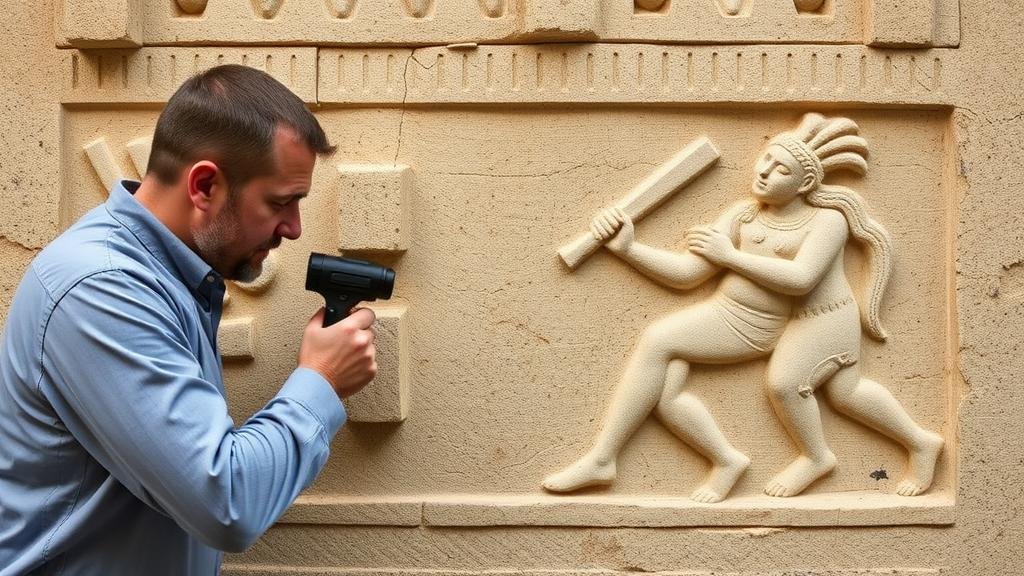Techniques for Detecting Trigger Mechanisms in Stone Carvings or Reliefs
Techniques for Detecting Trigger Mechanisms in Stone Carvings or Reliefs
Stone carvings and reliefs, often pivotal elements in historical architecture and art, frequently embody intricate mechanisms and systems that can evoke, manipulate, or enhance viewer interaction. Understanding the trigger mechanisms–defined as features or elements that elicit specific responses or interpretations–requires a multifaceted approach that integrates various analytical techniques. This article details a range of methodologies for identifying and analyzing these mechanisms within stone carvings and reliefs.
Understanding Trigger Mechanisms
Trigger mechanisms in stone carvings refer to aspects that activate a sensory, emotional, or cognitive reaction from the observer. For example, a carving representing a mythological scene may trigger feelings of nostalgia or curiosity about cultural narratives. Recognizing and decoding these mechanisms involves a rigorous examination of both the physical attributes of the artwork and its context.
Visual Analysis Techniques
Visual analysis is foundational in detecting artistic techniques and motifs that serve as triggers. Artists employ various visual elements–such as composition, line quality, and contrast–to provoke specific viewer responses. Here are significant visual analysis techniques:
- Composition Analysis: Studying how elements are arranged can reveal intended focal points or narrative flows. For example, in the Parthenon friezes, the positioning of figures leads the eye through a story that aligns with the viewers expectations of mythic progression.
- Line and Texture Examination: The quality of lines–smooth versus jagged–can indicate emotional undertones. Smooth lines may evoke calmness, while jagged lines may suggest tension, as seen in Gothic architectural reliefs.
By meticulously dissecting these elements, art historians can better understand how they collaborate to trigger specific responses from the audience.
Technological Methods of Analysis
Advancements in technology offer innovative tools for detecting trigger mechanisms. Here are several prominent techniques:
- 3D Scanning and Modeling: Utilizing 3D laser scanning provides detailed topographical data on carvings, revealing subtle undulations and variations that might go unnoticed in 2D observations. The use of models can illustrate how light interacts with surfaces in real-time, impacting the viewer’s emotional reception.
- Digital Photogrammetry: This technique involves capturing numerous photographs to create detailed 3D representations. By studying these models, researchers can identify wear patterns or alterations made to elicit specific viewer interpretations over time.
Technological methods allow researchers not only to analyze a static artifact but also to simulate its original context and intended visual impact, fostering deeper insight into its trigger mechanisms.
Contextual Analysis
Understanding the historical and cultural context surrounding a stone carving or relief is essential for illuminating its trigger mechanisms. Contextual analysis encompasses various factors:
- Cultural Significance: Artworks from different periods or geographical areas may use distinct motifs to convey social or political messages. For example, the intricate bas-reliefs of ancient Egypt often celebrated the afterlife, aimed at providing comfort and encouraging ritual participation among the living.
- Function and Placement: The original location of a carving or relief affects its interpretation. A carving placed in a temple context may invoke spiritual reverence, while one situated in a public square might serve as a political statement. Analyzing placement helps decipher the intended audiences reaction.
Case Studies and Real-World Applications
Several notable studies exhibit how these techniques yield insights into trigger mechanisms.
- The Acropolis Museum Exhibit: Scholars employed 3D modeling to demonstrate the Parthenons friezes’ effects under natural light, uncovering how sculptural details align with viewers’ lines of sight to enhance narrative roles.
- The Stelae of Axum: In this Ethiopian site, researchers combined visual and contextual analysis to reveal how engravings communicate political power, as the placement and design aligned with significant cultural festivals.
Actionable Takeaways
To effectively detect trigger mechanisms in stone carvings or reliefs, adopt the following approaches:
- Conduct thorough visual analyses focusing on composition and texture.
- Use advanced technologies such as 3D scanning and digital photogrammetry.
- Engage with contextual factors, including cultural significance and original placement, to uncover nuances in interpretation.
By integrating these methodologies, art historians and archaeologists can gain profound insights into the significance of stone carvings, enhancing appreciation and understanding of their roles in historical settings.



